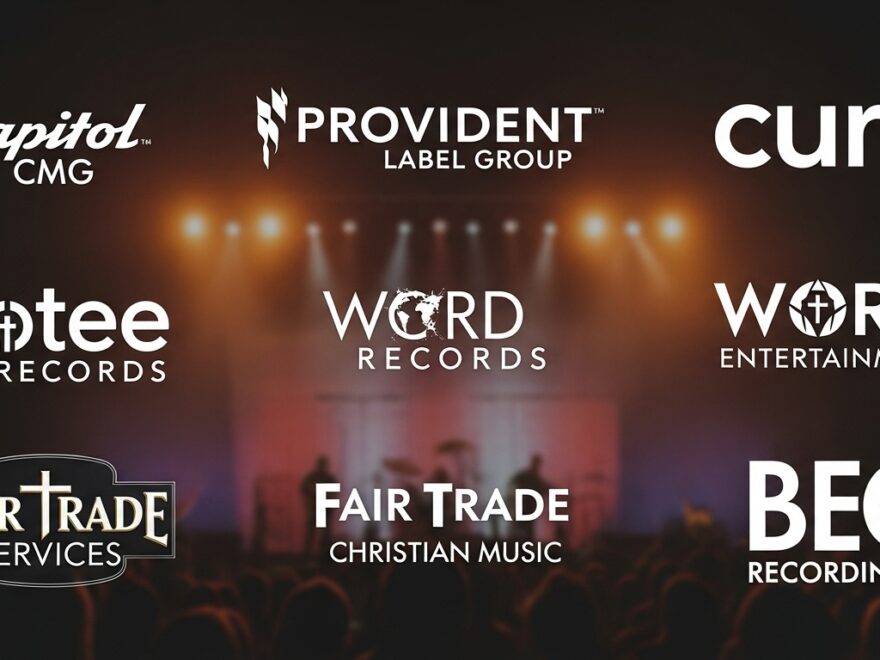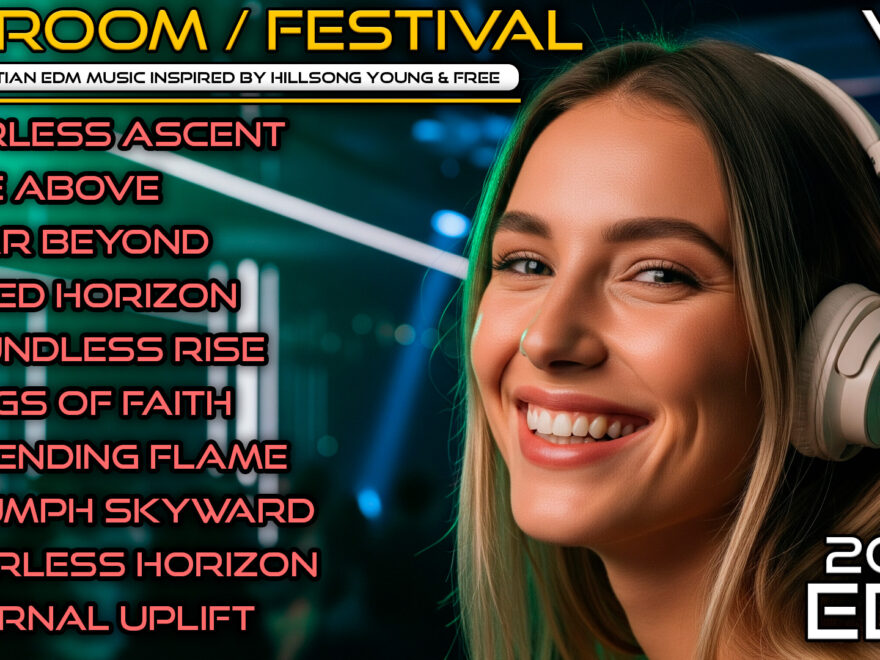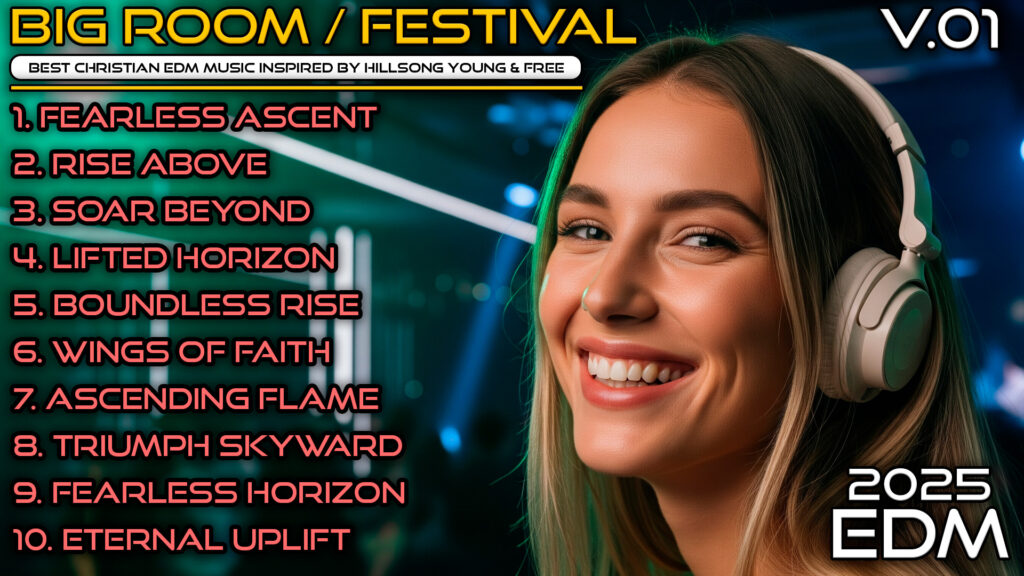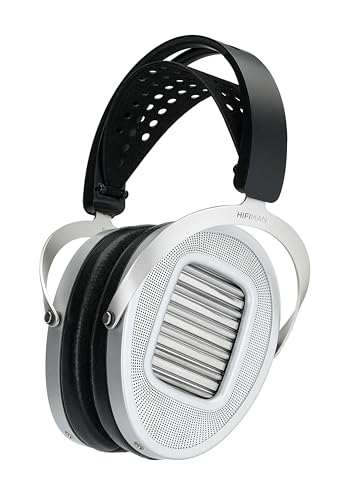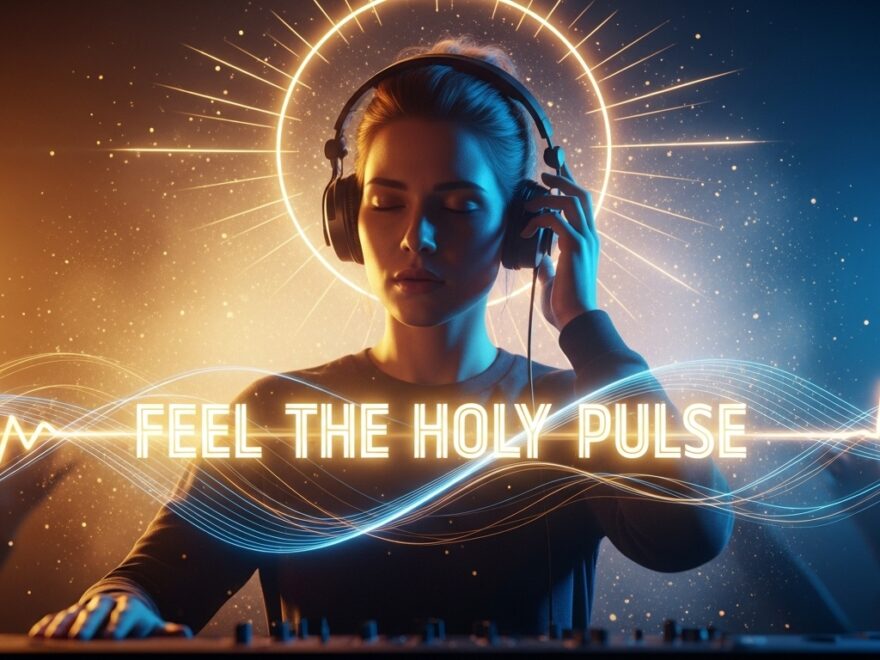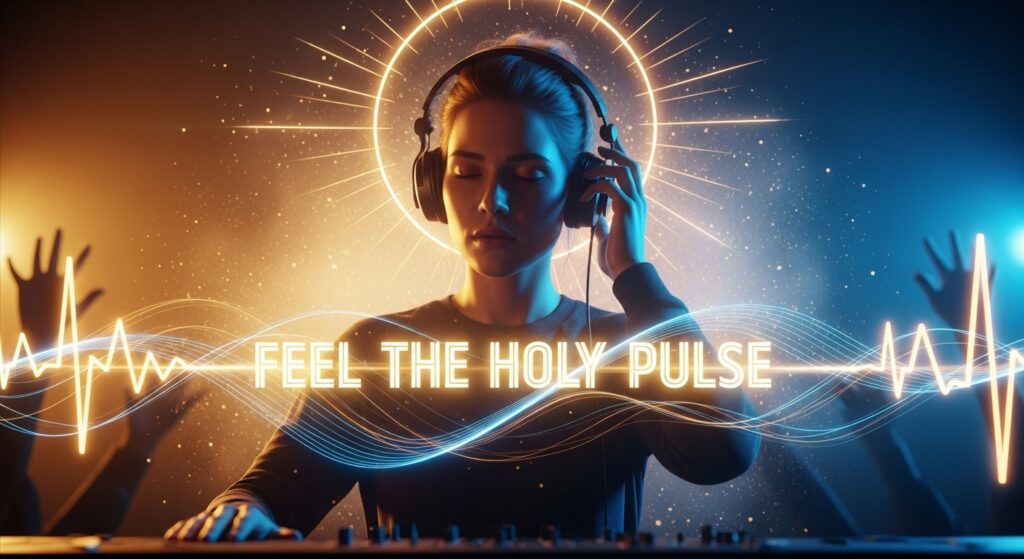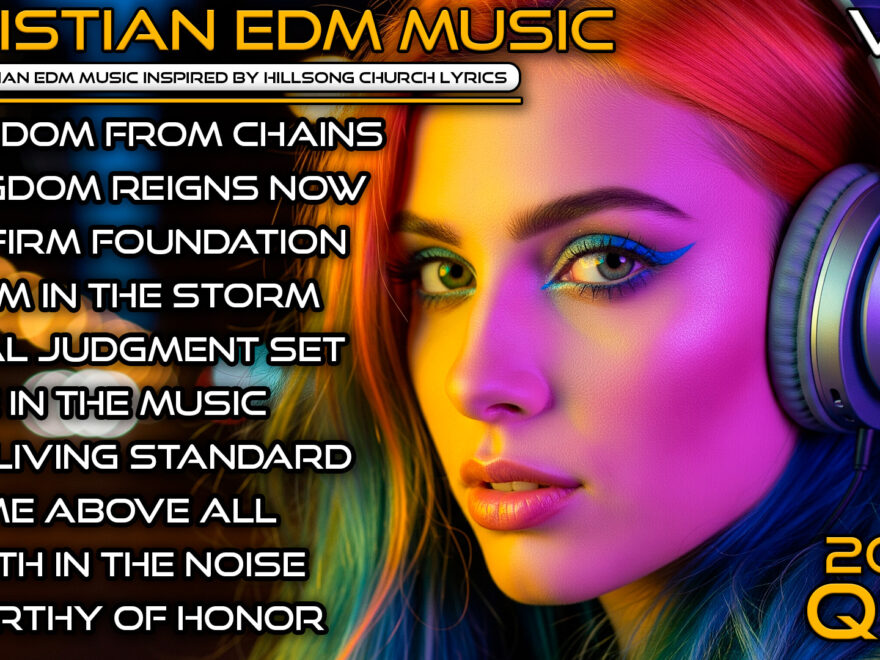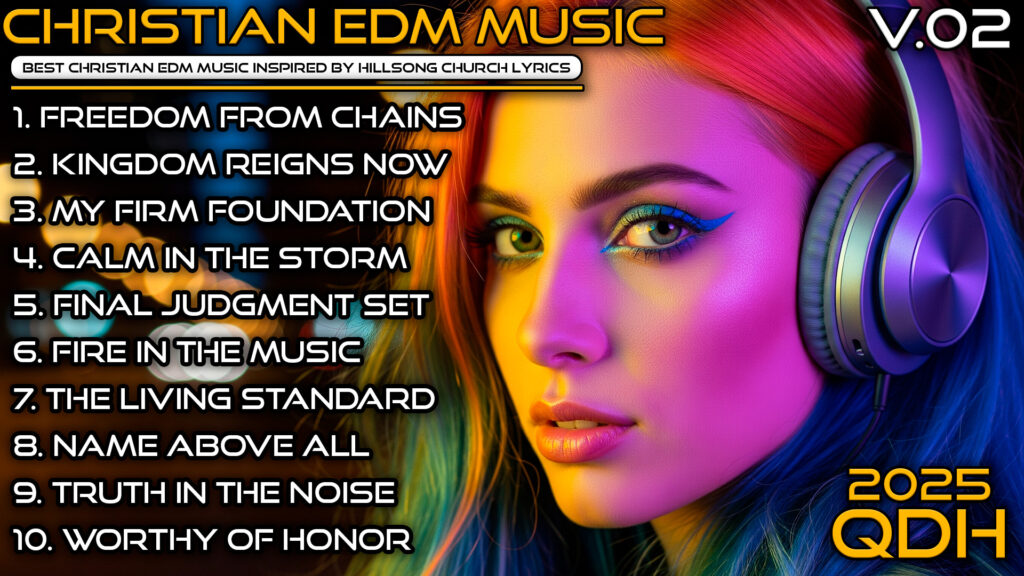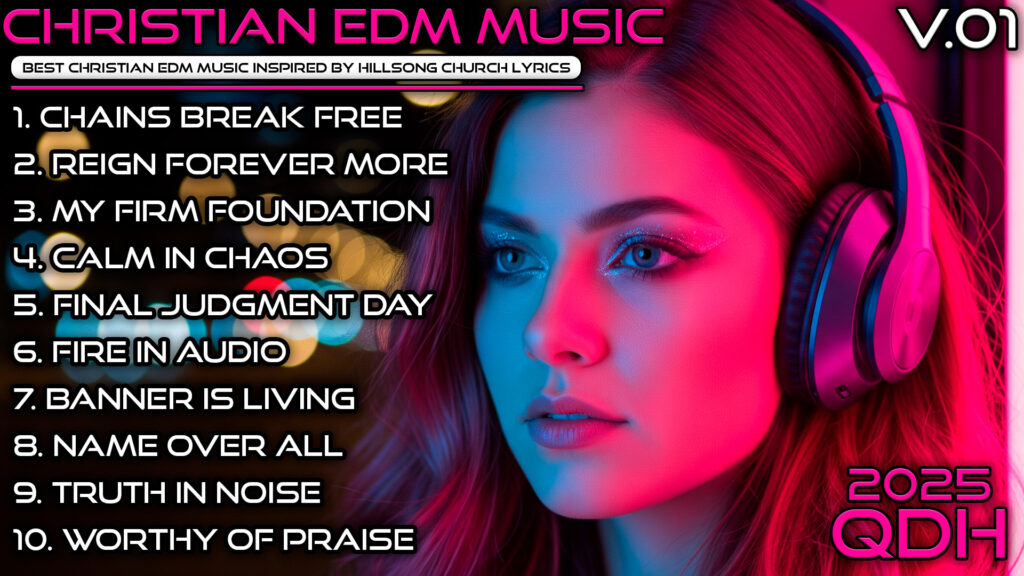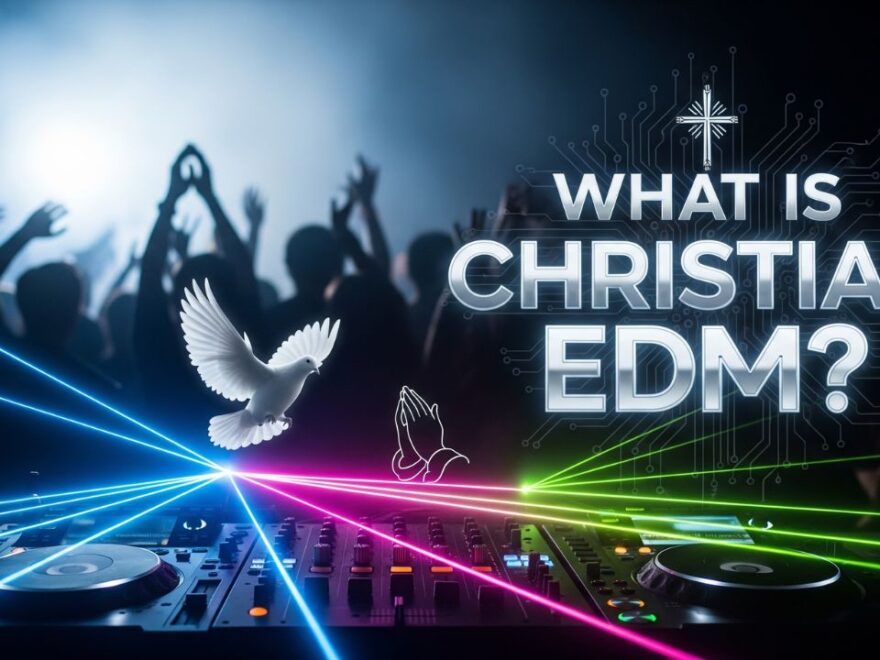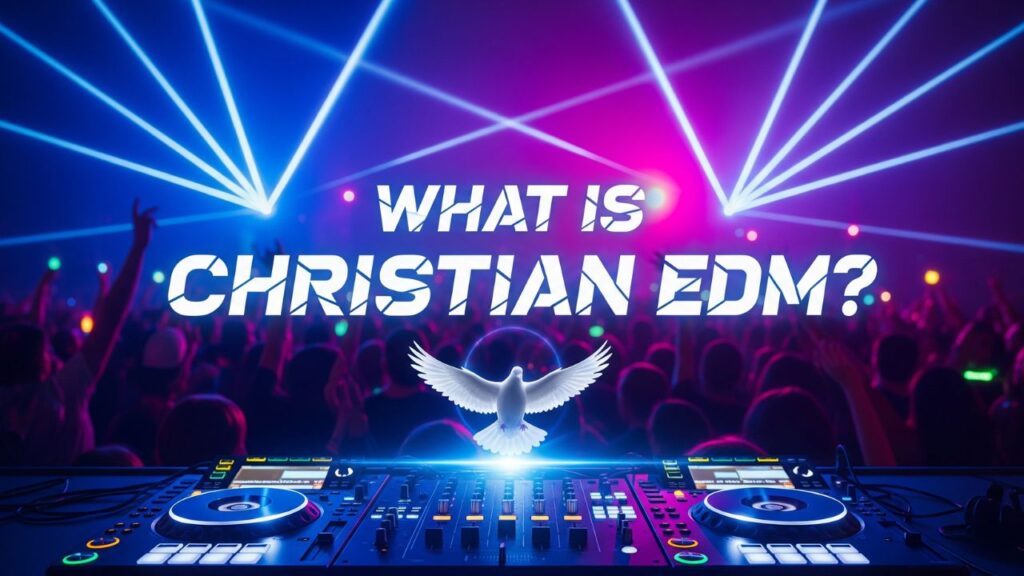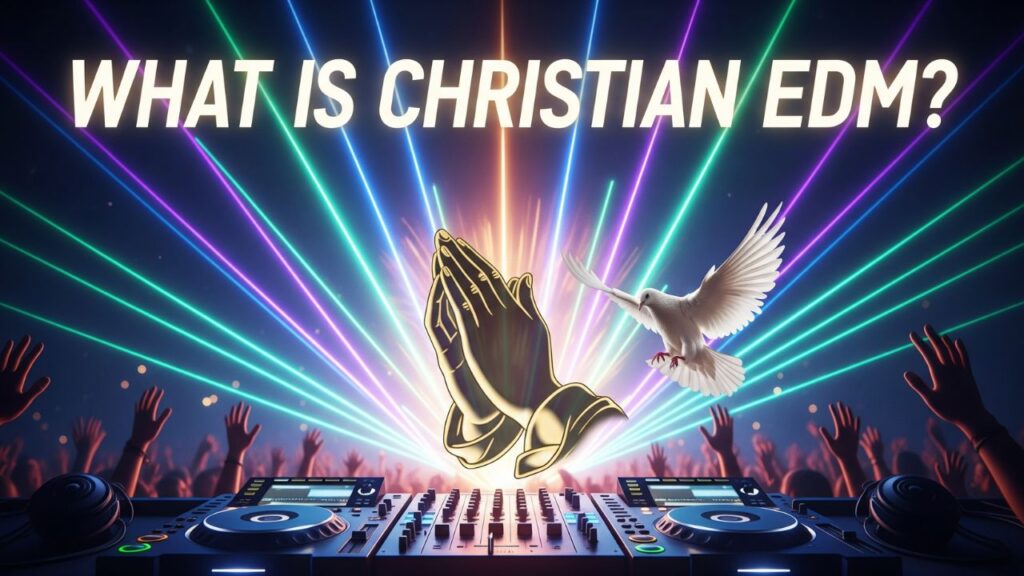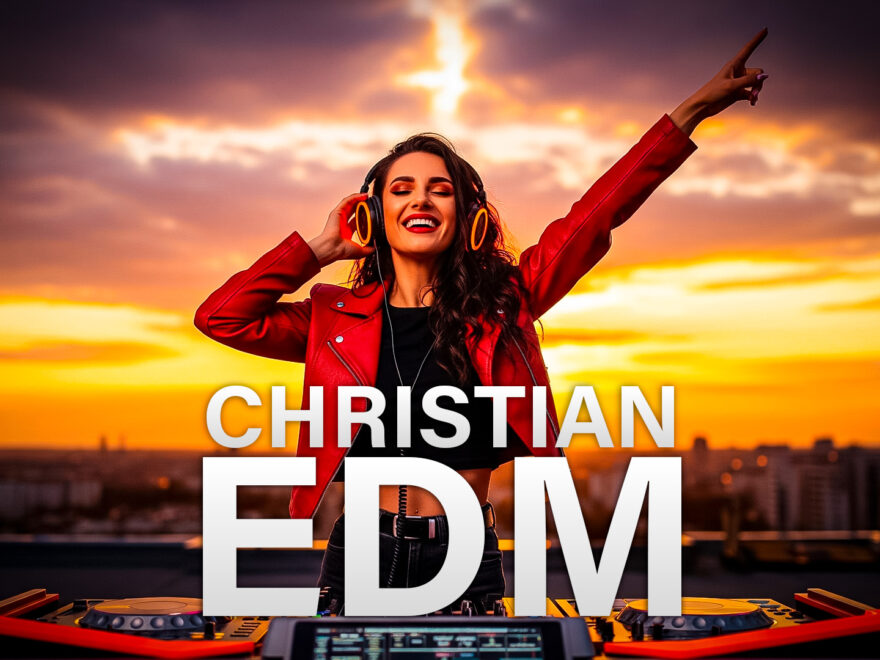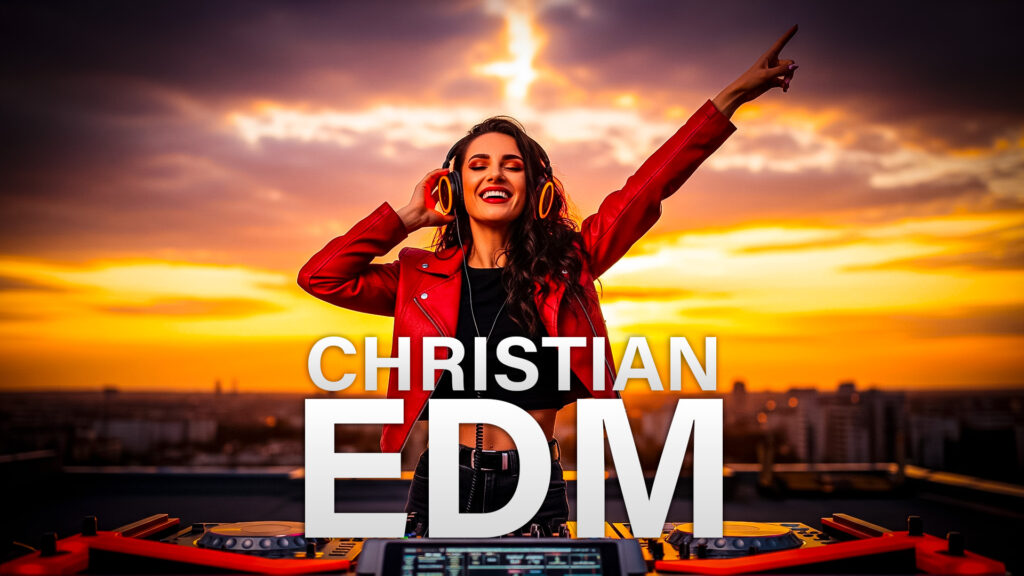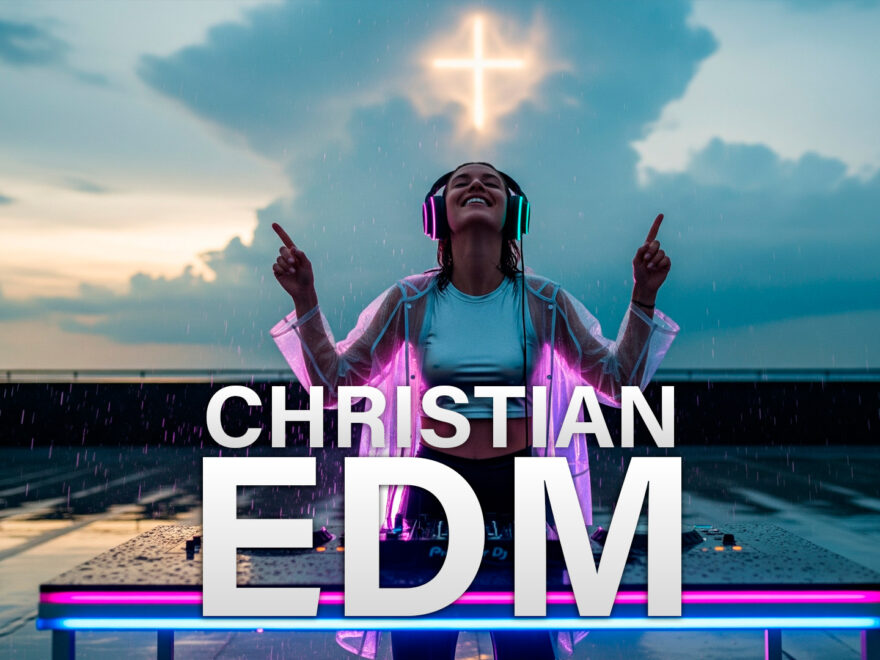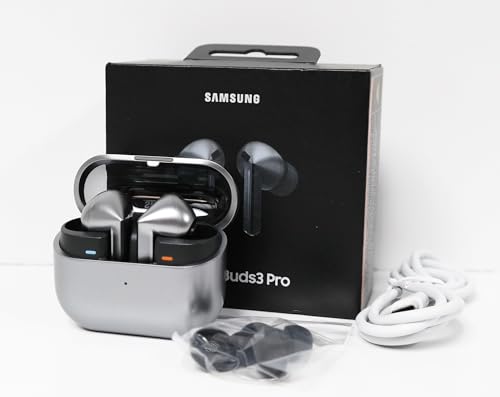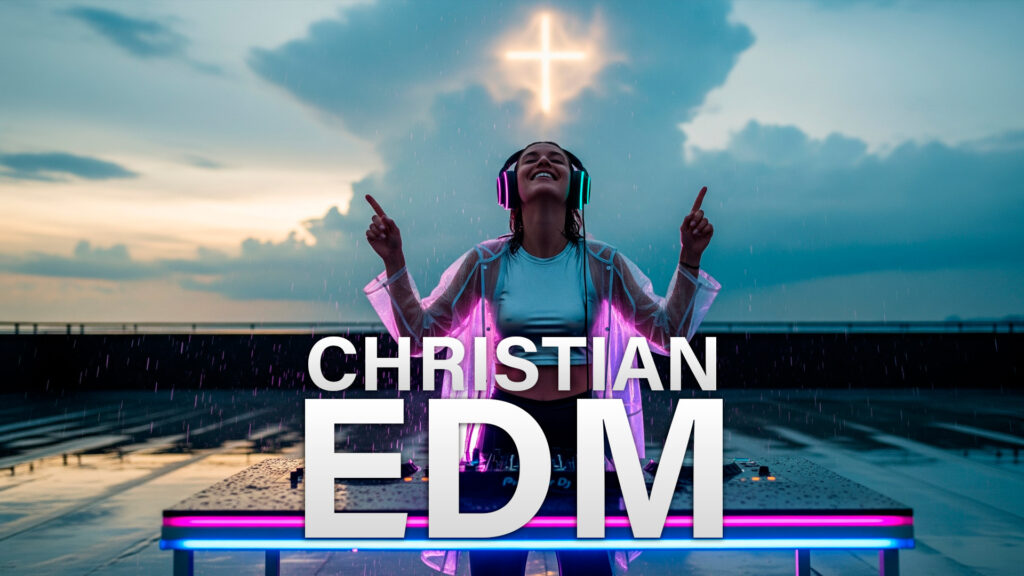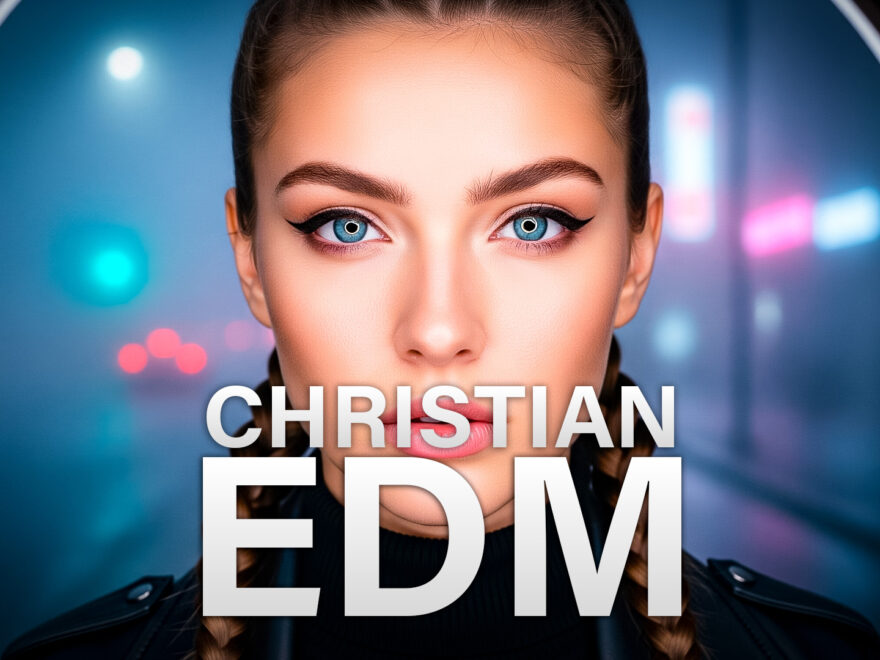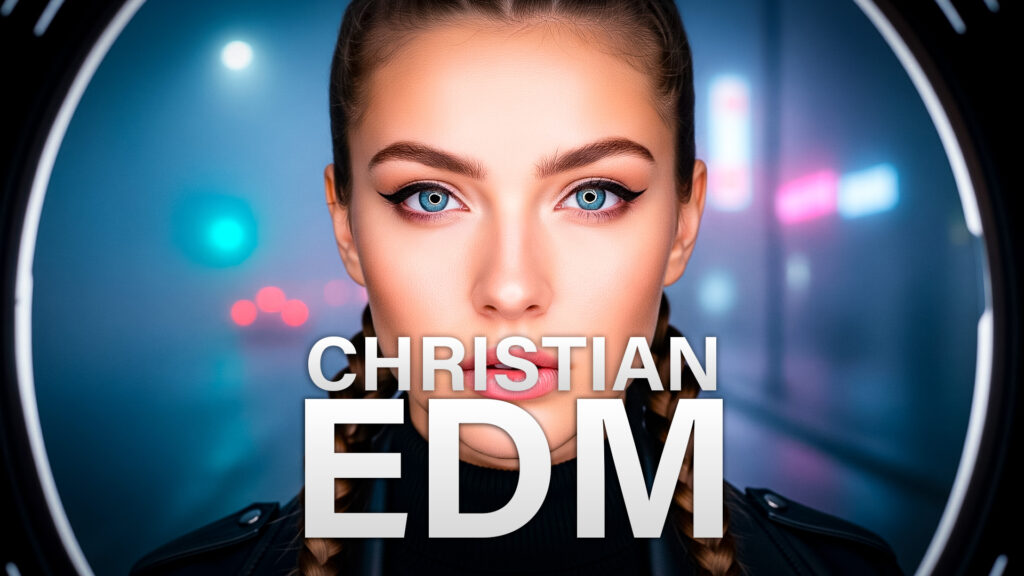Hey there, music explorers! Have you ever listened to a super-cool song and wondered, “How did this get to my ears?” Or maybe you love singing along to your favorite Christian artists and think, “Who helps them make all this awesome music?” Well, today, we’re going on a grand adventure! We’re going to peek behind the curtain and discover the amazing world of Christian music companies – the secret helpers who bring faith-filled tunes to life!
Imagine a superstar artist who writes beautiful songs about God’s love or hope. They have a fantastic voice and big dreams. But wait! How do they record their songs perfectly? How do they get their music on the radio, on your phone, or on a CD? How do people even know they exist? That’s where Christian music companies come in!
Think of these companies like a super-support team, a group of amazing people who work together to make sure Christian music can be heard by everyone. They’re like the coaches, the managers, the cheerleaders, and the roadies all rolled into one, but for musicians! They help artists create, share, and celebrate their music. It’s a huge, exciting world, and it’s all about sharing messages of faith, joy, and encouragement through the power of song.
So, buckle up, because we’re about to explore everything from the biggest music groups to tiny independent labels, how artists get discovered, and even what kinds of cool jobs you could have in the Christian music world someday! Get ready to discover the magic behind the music!
Capitol Christian Music Group: The Big Friendly Giant of Christian Music Companies!
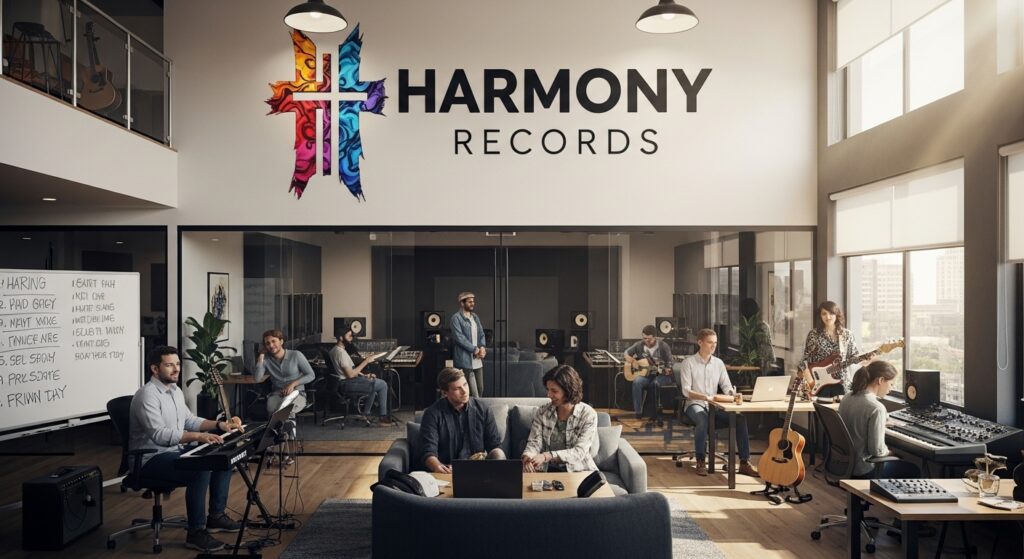
Alright, let’s kick things off with one of the absolute biggest and most famous helpers in the Christian music world: Capitol Christian Music Group. Now, that’s a long name, right? Let’s break it down like we’re solving a puzzle!
Imagine you have a giant, super-strong superhero who helps many other smaller superheroes. That’s a bit like Capitol Christian Music Group. “Capitol” is a really old and famous name in the whole music world, like a very old, grand building where lots of important things happen. It’s been around for ages, helping all sorts of music artists.
Then comes “Christian.” This part tells us that this specific group focuses on music that talks about faith, God, Jesus, hope, love, and all those wonderful messages you hear in church songs or uplifting tunes. It’s music that wants to make your heart feel good and remind you of important things.
And finally, “Music Group.” Think of a “group” like a big team, but even bigger! It’s not just one record label (we’ll talk about those soon!), but like a whole collection of different teams, all working together under one giant roof. So, Capitol Christian Music Group is like a big, friendly, powerful family of companies, all dedicated to Christian music.
Christian Music Companies Giant Do?
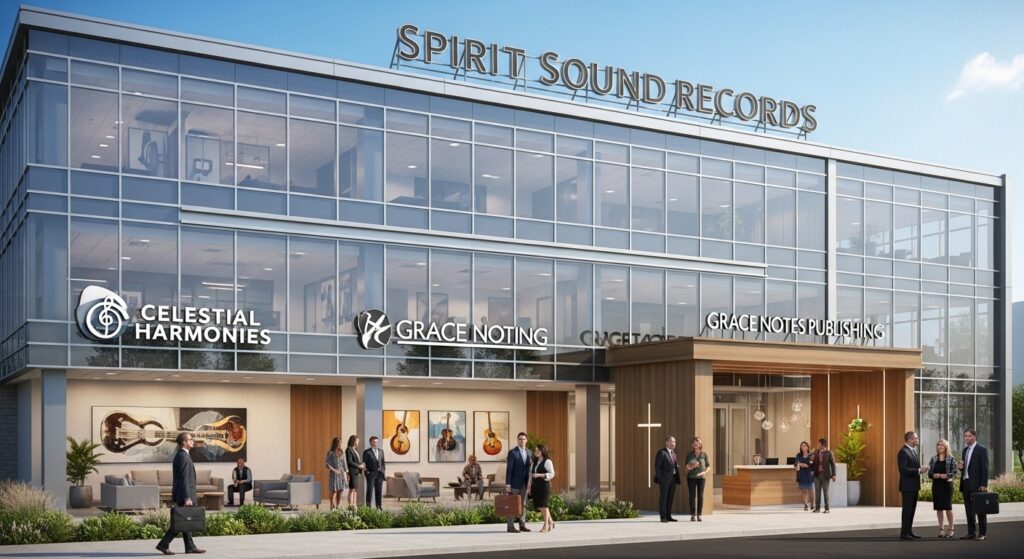
So, what does this massive team actually do? Well, they do almost everything for Christian artists! Imagine you want to build the most amazing treehouse ever. You’d need wood, nails, tools, paint, and maybe even a snack break! Capitol Christian Music Group provides all the “tools” and “helpers” for musicians to build their amazing music.
- Finding Superstars (and Future Superstars!): One of the first things they do is find talented singers and musicians. They have special people called “A&R” (Artist & Repertoire) who are like talent scouts. They go to concerts, listen to music online, and just keep their ears open for someone special. Imagine them as treasure hunters, looking for the next big voice or the next amazing songwriter who can share a powerful message.
- Making Music Magic: Once they find an artist, it’s time to make music! This is where the magic happens.
- Recording: They help artists go into super-cool studios. These studios are like giant, quiet rooms with fancy microphones and soundproofing, so every note sounds perfect. It’s like going to a special kitchen to bake the best cake – you need all the right ingredients and tools!
- Producing: A “producer” is like the captain of the music ship. They help the artist decide how the song should sound, what instruments to use, and how to make it super catchy and meaningful. They guide the whole recording process.
- Mixing: After all the different instruments and voices are recorded, a “mixing engineer” is like a sound chef. They blend everything together perfectly, so the drums aren’t too loud, and the singer’s voice shines, and all the parts sound great together.
- Mastering: This is the final polish, like shining a brand-new car! A “mastering engineer” makes sure the song sounds fantastic on every speaker – whether it’s on your tiny phone, a giant concert stage, or the car radio.
- Sharing the Sound with the World: What’s the point of making amazing music if no one hears it? This is where Capitol Christian Music Group really shines. They are experts at sharing music everywhere!
- CDs and Vinyl: Even though we listen to a lot of music online now, they still help make physical copies like CDs.
- Streaming: They make sure the music is on all your favorite streaming apps, like Spotify, Apple Music, and Amazon Music, so you can listen anytime, anywhere.
- Radio: They work with radio stations (especially Christian radio stations!) to get artists’ songs played, so millions of people can discover them.
- Concerts and Tours: They help plan concerts and tours, so artists can travel around and sing for their fans in person. Imagine planning a giant school play, but it’s for thousands of people in different cities!
- Music Videos: They even help artists create cool music videos to go along with their songs, making the music even more exciting to experience.
- Helping Artists Grow: Beyond just making and sharing music, Capitol Christian Music Group also helps artists with their “brand.” This means helping them decide what their album covers should look like, how they talk to their fans, and even helping them with things like social media. They want artists to be successful and share their message clearly. It’s like helping a painter decide what kind of art they want to be famous for and how to show it to the world.
Why is Capitol Christian Music Group So Important?
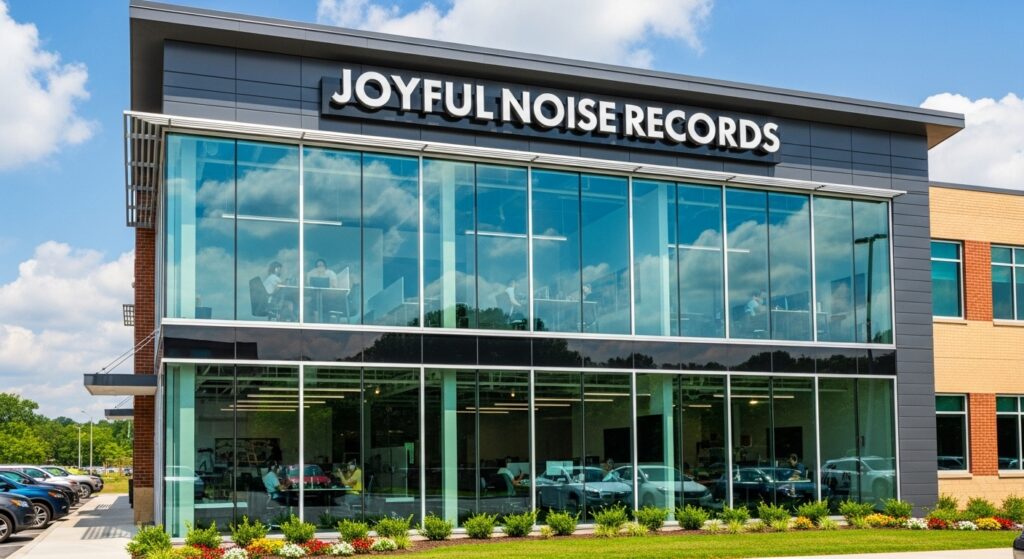
Because they help bring so much beautiful music into our lives! Think of all the songs that have made you feel happy, hopeful, or helped you understand something about your faith. Many of those songs have been brought to you with the help of Capitol Christian Music Group. They support a huge variety of artists, from people who sing powerful worship songs you hear in church to pop artists with catchy tunes that remind you to be kind and loving.
They are a big, powerful team that makes it possible for artists to focus on what they do best – creating amazing music – while the group handles all the tricky parts of getting that music to you. It’s like a massive support system that ensures the message of Christian music keeps spreading far and wide, touching hearts and bringing joy to so many people. They help make dreams come true, both for the artists and for the listeners who love their music. It’s a truly inspiring part of the music world!
Christian Record Labels Looking for Artists: The Talent Scouts!

Imagine you’re an amazing soccer player. You practice every day, you’re super fast, and you can score goals like magic! But how does a big soccer team, like a professional one, find you? They send out talent scouts, right? People who watch games and look for kids with special skills.
Well, Christian record labels looking for artists are just like those talent scouts, but for music! A “record label” is a part of a bigger music company (sometimes it is the whole company, if it’s small) that specializes in finding new musicians, helping them record their songs, and then sharing those songs with the world. They are the “artist finders” and the “music makers” of the industry.
Why Do Artists Need a Record Label Anyway?
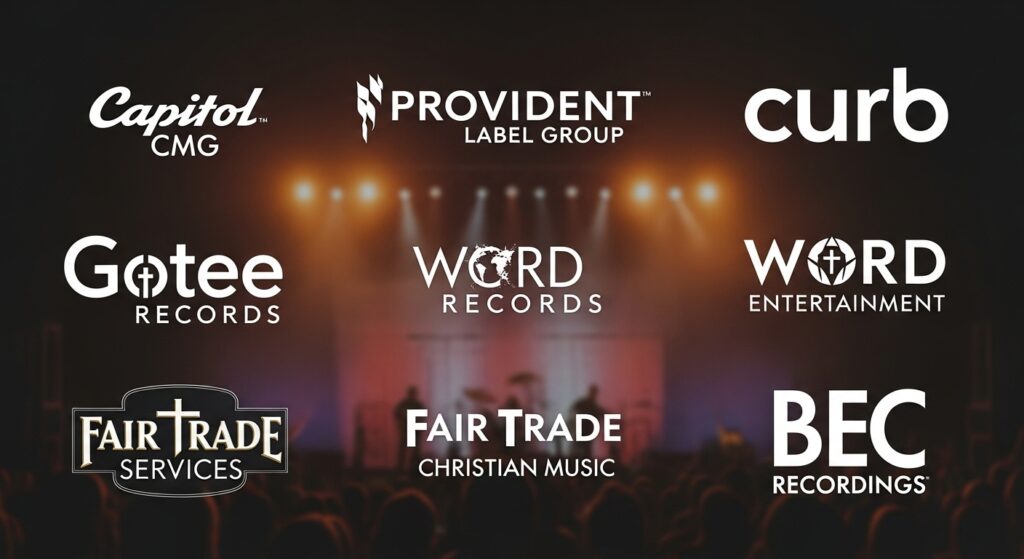
You might wonder, “Can’t artists just put their music online themselves?” And yes, they can! But it’s super, super hard to do everything alone. Imagine trying to build a whole house by yourself. You’d have to be the carpenter, the plumber, the electrician, the painter, and the roof-builder! It would take forever, and it might not be as good as if a team of experts helped you.
Record labels are like that team of experts for musicians. They offer:
- Money (Investments): Making good music costs money! Recording in a professional studio, hiring musicians, making music videos – it all adds up. Labels often give artists money to help them create their best work. It’s like an investment in their talent.
- Expert Help: Labels have people who know everything about music. They have producers, engineers, marketing experts, and lawyers who can guide artists.
- Connections: Labels have friends in high places! They know people at radio stations, streaming companies, and concert venues. This makes it much easier to get music heard.
- Marketing and Promotion: This is like telling everyone in the world how amazing an artist’s music is! Labels help create catchy advertisements, get artists interviewed, and make sure people know when a new song is coming out.
So, a record label is like a powerful partner that helps an artist turn their musical dreams into reality and share them with the biggest audience possible, especially when those dreams involve spreading messages of faith and hope.
How Do These Labels Find Their Treasure (Artists)?
This is the exciting part! Labels are always on the lookout for fresh voices and inspiring messages. They have many ways of finding new artists:
- Talent Scouts (A&R Reps): As we mentioned, these are like musical detectives! They go to concerts, open mic nights (where anyone can get up and sing), and church events. They might even spend hours listening to music online, looking for that special spark. Imagine someone whose job is just to listen to cool music all day – pretty awesome, right?
- Referrals: Sometimes, artists are found because someone else recommends them. Maybe a famous artist likes a new singer and tells their label, “Hey, you have to check out this person!” Or maybe a music teacher tells an A&R person about a super-talented student.
- Online Discoveries: The internet is a huge playground for music! Labels spend a lot of time on websites like YouTube, TikTok, and Instagram, looking for artists who are already sharing their music and building a following. If an artist has lots of views or followers, it shows they have something special that people connect with.
- Demos (More on this later!): Artists can also send in “demos” – little packages of their music – directly to labels. It’s like sending in an audition tape. Labels have special people who listen to these demos, hoping to find a hidden gem.
- Songwriting Camps: Sometimes, labels organize special “camps” where songwriters get together to create new songs. It’s a great way for labels to see who has amazing ideas and who works well with others.
What Do Christian Labels Look For in an Artist?
It’s not just about having a pretty voice or playing an instrument really well. While those are important, Christian labels look for a few other special things:
- Authentic Faith: This is super important. They want artists whose faith is real and who genuinely want to share God’s message through their music. It’s not just about singing words; it’s about believing them. Imagine someone telling a story – you can tell if they truly believe the story or are just making it up.
- Unique Voice/Sound: There are millions of songs out there! Labels look for artists who sound different, who have a special style, or who bring a new energy to Christian music. It’s like finding a brand-new color you’ve never seen before!
- Great Songs: An artist might have an amazing voice, but if their songs aren’t good, it’s tough. Labels look for catchy melodies, meaningful lyrics, and songs that can touch people’s hearts and encourage them.
- Passion and Drive: Being a musician is hard work! Labels want artists who are dedicated, who love what they do, and who are willing to work hard to make their dreams come true. They need to be ready to practice, write, travel, and keep learning.
- Good Character: This is really important in Christian music. Labels want artists who are kind, humble, good role models, and who represent their faith well. They want artists who will inspire people not just with their music, but also with their lives.
- Ability to Connect: Can the artist connect with people in a concert? Do their words make sense to listeners? Can they share their heart in a way that people understand and feel? This connection is key!
The Artist’s Journey to a Record Deal
Imagine an artist, let’s call her Sarah. Sarah loves to sing and write songs about her faith.
- Step 1: The Beginning. Sarah starts by singing in her church choir, then at local youth events. She starts writing her own songs on her piano. Her friends and family tell her, “You’re amazing, Sarah! You should share your music!”
- Step 2: Getting Noticed. Sarah starts recording simple versions of her songs on her phone and putting them on YouTube. She performs at small cafes and talent shows. One day, a friend of a friend, who knows an A&R scout, hears her and tells the scout about her.
- Step 3: The Call! The A&R scout listens to Sarah’s music and is impressed! They reach out to Sarah and say, “We love your sound! Can we hear more?”
- Step 4: The Meeting. Sarah meets with people from the record label. She plays her songs live, talks about her faith, and shares her dreams. The label team asks her lots of questions and gets to know her. They want to make sure she’s a good fit.
- Step 5: The “Record Deal.” If everyone agrees, the label offers Sarah a “record deal.” This is like a special promise, a contract (a fancy word for an agreement) where the label promises to help Sarah make and share her music, and Sarah promises to work with the label. It’s a big, exciting moment!
Getting signed to a Christian record label is a huge step for an artist. It means they’ve found a team of passionate people who believe in them and want to help them share their important, faith-filled music with the entire world. It’s like finding the perfect teammate to help you score the winning goal!
Christian Record Labels Accepting Demos: Your Musical Audition!
Okay, so we just talked about how Christian record labels look for artists. One of the ways artists try to get noticed is by sending in something called a “demo.” Have you ever had an audition for a school play or a sports team? A demo is kind of like a musical audition tape!
What Exactly is a “Demo”?
A “demo” is a short recording of an artist’s songs. The word “demo” is short for “demonstration,” meaning it’s a way for an artist to demonstrate what they can do. It’s not usually a perfectly finished song like you hear on the radio. It’s more like a sneak peek, a sample of their talent and their music.
Imagine you’re trying out for a cooking show. You wouldn’t make a giant, 10-course meal. You’d make one or two of your very best dishes to show the judges what you’re capable of! A demo is similar. It’s usually just 2 or 3 of an artist’s best songs, often recorded simply, maybe just with a guitar and voice, or a piano and voice. The main goal is to show off their singing, songwriting, and the message of their music.
Why Send a Demo?
Artists send demos to Christian record labels because it’s a direct way to introduce themselves and their music. It’s like knocking on the label’s door and saying, “Hey, listen to this! I have something special to share!” Even if a label has talent scouts, they can’t be everywhere at once. A demo allows an artist, no matter where they live, to put their music in front of the people who can help them.
It’s a way for labels to discover hidden gems – artists who might not have been found at a live show or through an online video yet. It shows initiative and passion from the artist, which labels really like to see.
How Do You Make a Good Demo? (Even if you’re a kid!)
Even if you’re a young aspiring musician, these tips are important!
- Choose Your BEST Songs: Don’t send every song you’ve ever written! Pick the 2 or 3 songs that truly shine. These should be the ones that show off your voice, your songwriting, and your faith message most clearly. Think of them as your “super hit” songs.
- Keep It Simple: You don’t need a super fancy studio to make a good demo. Sometimes, just your voice and one instrument (like a guitar or piano) is perfect. The label wants to hear you and your song, not a bunch of complicated music. You can even record it clearly in a quiet room with a good microphone (some phones even have pretty good microphones these days!).
- Clear Voice, Clear Message: Make sure your singing is clear and easy to understand. The words of your song are super important, especially for Christian music, because they carry the message of faith.
- Good Quality Sound: Even though it’s simple, it should still sound good. No crackling, no background noise, no fuzzy sounds. You want the listener to focus on your music, not be distracted by bad sound. Imagine listening to a story where the speaker keeps mumbling – it’s hard to enjoy!
- Be Yourself: Don’t try to sound like someone else. Labels want to hear your unique voice and your unique message. That’s what makes you special!
Who Listens to Demos at the Labels?
At Christian record labels, there are special people whose job it is to listen to demos. These are often the A&R (Artist & Repertoire) representatives or their assistants. They have incredibly good ears and know what to listen for. They’re like musical detectives, sifting through many demos to find those golden nuggets.
They listen for:
- Originality: Does the artist sound unique?
- Strong Songwriting: Are the lyrics meaningful? Is the melody catchy?
- Vocal Talent: Can the artist really sing?
- Authenticity: Does their faith come through in their music?
- Potential: Do they have the potential to grow and become a successful artist?
It’s important to know that these people listen to tons of demos. So, an artist might not get a “yes” right away, and that’s okay! It just means they keep practicing, keep writing, and keep trying.
Tips for Young Aspiring Musicians (That Apply to Demo Sending Too!)
If you love music and dream of sharing your faith through song, here are some super important tips:
- Keep Practicing! The more you practice your singing and playing instruments, the better you’ll get. Like a superhero building their strength, practice makes you stronger!
- Keep Writing Songs! Don’t be afraid to write down your ideas and feelings. Your unique stories and faith experiences are what make your songs special.
- Share Your Music with Friends and Family: Get feedback! Ask people, “What do you think of this song?” Their opinions can help you improve.
- Be Patient: Becoming a successful musician doesn’t happen overnight. It takes time, hard work, and lots of patience. Keep believing in yourself and your music!
- Stay True to Your Faith: For Christian music, this is the most important part. Let your faith guide your music and your life. That’s what will make your songs truly powerful and connect with people’s hearts.
Sending a demo is a bold step for any artist. It’s a way of saying, “Here’s my heart, here’s my music, and I believe it can make a difference.” And for Christian record labels, it’s a constant stream of new possibilities, new voices, and new ways to spread messages of hope and joy around the world. It’s a wonderful example of how artists and companies work together to make musical dreams a reality.
Black Gospel Record Labels: The Heartbeat of Joyful Sound!
Get ready for some incredibly powerful, soulful, and joyful music! When we talk about Black Gospel record labels, we’re diving into a very special and important part of Christian music. Gospel music is a type of Christian music that is full of amazing energy, deep emotion, and super strong faith. It often makes you want to clap your hands, stomp your feet, and sing along with all your heart!
What is Gospel Music?
Imagine going to a church service where the music is so alive, so full of spirit, that it makes you feel like dancing and celebrating! That’s Gospel music. It’s about praising God, sharing stories from the Bible, and spreading messages of hope, strength, and salvation.
Gospel music often features:
- Powerful Voices: Singers with incredible range and emotion, who can make you feel every word.
- Amazing Choirs: Many gospel songs have large choirs singing together, creating a huge, rich sound that fills the room. It’s like a wall of beautiful harmony!
- Lively Instruments: You’ll often hear energetic pianos, organs, drums, bass guitars, and sometimes even brass instruments like trumpets and trombones, all playing with a lot of rhythm and groove.
- Call and Response: Sometimes, a lead singer will sing a line, and then the choir or audience will sing a response. It’s like a musical conversation!
- Lots of Emotion: Gospel music can make you feel happy, sad, hopeful, or strong – all at the same time. It’s music that comes straight from the heart.
Why “Black Gospel”?
The term “Black Gospel” highlights the deep roots and history of this music in African American culture and churches. It began many years ago, evolving from spirituals (songs sung by enslaved people in America) and hymns, and it grew particularly strong in Black churches. This music became a way for people to express their faith, find comfort, celebrate joy, and stand strong even in difficult times.
Black Gospel record labels are special because they understand this rich history and the unique sound of Black Gospel music. They are dedicated to:
- Preserving Tradition: They help keep the classic, traditional Gospel sounds alive, making sure that the important stories and styles are passed down through generations.
- Nurturing New Talent: They also look for new artists who are bringing fresh, modern sounds to Gospel music, while still keeping that powerful, faith-filled core.
- Sharing Culture and Faith: These labels play a huge role in sharing not only Christian faith but also the vibrant culture and musical traditions of the Black community with the world.
How is Black Gospel Different/Similar to Other Christian Music?
It’s a great question! All Christian music shares the same core message: it’s about faith, God, Jesus, and hope. But the style and sound can be different, just like different countries have different kinds of food, even if they all use some of the same ingredients!
- Similarities: Both Black Gospel and other Christian music (like Christian Pop or Christian Rock) sing about God’s love, forgiveness, and guidance. They both aim to inspire, uplift, and bring people closer to their faith.
- Differences:
- Sound and Feel: Black Gospel often has a very distinct, soulful, and rhythmic sound. It can be more improvisational (meaning artists make up parts as they go along, like a jazz musician), with lots of vocal runs and powerful belting. It can also have a strong “groove” that makes you want to move.
- Instrumentation: While other Christian music might use more electric guitars for rock, Black Gospel often leans heavily on the piano, organ (especially the Hammond B3 organ, which has a very specific, churchy sound!), and a strong rhythm section (drums and bass).
- Historical Roots: The unique history of Black Gospel, born from the spiritual experiences and struggles of African Americans, gives it a special depth and emotional power that is truly unique.
The Important Role of Black Gospel Record Labels
These labels are super important because they:
- Provide a Platform: They give Black Gospel artists a place to record their music professionally and get it out to a wider audience. Many incredibly famous Gospel artists, both traditional and contemporary, got their start and grew with the help of these labels.
- Support a Unique Genre: They focus specifically on Gospel music, understanding its nuances, its audience, and its message. They know how to market it and connect it with the right listeners.
- Build Community: Gospel music often creates a strong sense of community. The labels help artists reach churches, festivals, and events where this community gathers, strengthening the bonds of faith and music.
- Celebrate Heritage: They help celebrate and continue the amazing heritage of Black Gospel music, ensuring that its powerful message and incredible sound continue to inspire people for generations.
Imagine a label that is not just a company, but also a guardian of a treasured musical tradition, a supporter of deeply spiritual artists, and a spreader of pure joy. That’s what Black Gospel record labels do. They help unleash music that can make your heart soar, fill you with hope, and remind you of the incredible power of faith. It’s truly a vibrant and essential part of the larger Christian music family!
Independent Christian Record Labels: The Brave Explorers!
We’ve talked about the big friendly giants like Capitol Christian Music Group, but now let’s meet some super important, but often smaller, heroes of the music world: independent Christian record labels.
Imagine the big music companies are like huge, fancy cruise ships – they can carry lots of passengers (artists) and have tons of resources. Independent Christian record labels, or “indie” labels for short, are more like nimble, fast sailboats. They might not be as big, but they can explore different waters, go to unique places, and are often very close-knit with their crew (artists).
What Does “Independent” Mean in Music?
The word “independent” means “not controlled by a larger, bigger company.” So, an independent Christian record label is a company that operates on its own. It’s not owned by a huge corporation that also owns lots of other record labels. They make their own decisions, choose their own artists, and often have a very specific idea about the kind of music they want to share.
Think of it like a small, special boutique shop instead of a giant department store. Both sell clothes, but the boutique might have a very unique style, offer more personal service, and choose its items with extra care.
Why Are Independent Labels Important?
Independent labels are like the brave explorers of the music world. They do some really amazing things:
- Discovering New Sounds: Because they’re smaller and can make decisions quickly, they’re often the first to find new, unusual, or “outside-the-box” sounds in Christian music. Maybe an artist has a very different style, or sings about faith in a completely new way. A big label might be slow to take a chance on something so different, but an indie label can jump right in!
- Nurturing Unique Artists: Indie labels often work very closely with their artists. It’s like a family. They can give artists more personal attention, help them develop their own unique style, and let them have more control over their music. This means artists can truly be themselves!
- Focusing on Niche Genres: Sometimes, there are specific kinds of Christian music that only a smaller group of people love. For example, Christian folk music, or Christian electronic music, or very specific worship styles. Independent labels can focus on these “niche” (meaning a small, specialized group) genres, helping those artists reach their dedicated fans.
- Giving Artists More Freedom: With an independent label, artists often have more “creative freedom.” This means they get to decide more about how their songs sound, what their album covers look like, and the messages they want to share, without as many rules from a big company.
- Building Local Scenes: Many independent labels start in a specific city or region. They become very important to the local music community, helping artists from that area get started and gain a following.
How Do They Work Differently?
Because they’re smaller, independent labels often have a different way of doing things:
- Hands-On Approach: The people who run indie labels are often incredibly passionate about music. They might do many jobs themselves – from finding artists to helping with recordings to promoting the music. It’s very “hands-on.”
- Smaller Teams: Instead of hundreds of people, an indie label might have just a few dedicated people working there. This means everyone knows each other well and works together very closely.
- Creative Focus: They often prioritize the artistic quality and message of the music above everything else. While big labels need to sell millions of copies, indie labels might be happy if their music reaches a dedicated group of listeners who truly connect with the art.
- Using the Internet: Independent labels are often very good at using the internet and social media to find artists and share music. Since they might not have huge marketing budgets, they get creative with online tools to reach their audience.
The Pros and Cons of Being “Independent”
Everything has its good points and its challenging points, right?
Good Points (Pros):
- More Artistic Freedom: Artists get to make the music they want to make.
- Closer Relationships: Artists often become very close with their label team.
- Faster Decisions: No big committees to go through, so things can happen more quickly.
- Focus on Unique Music: Great for artists with a different or specialized sound.
Challenging Points (Cons):
- Less Money: Indie labels usually have less money than big labels, so they can’t always pay for super expensive music videos or giant concert tours.
- Less Reach (at first): It might be harder for an indie artist to get their music on every radio station or every big streaming playlist right away.
- More Work for the Artist: Sometimes, artists on indie labels need to do more of their own promotion or planning.
Despite some challenges, independent Christian record labels are absolutely essential. They are the breeding ground for new ideas, new sounds, and new voices in Christian music. They give artists the space to be truly authentic and create music that speaks to a specific heart or fills a particular need. They are proof that you don’t have to be the biggest to make the biggest impact – sometimes, being nimble and passionate is all you need to change the world, one song at a time. They truly are the brave explorers, charting new courses for faith-filled music!
Biggest Christian Record Labels: The Superstars of Support!
We’ve talked about little boats and big cruise ships. Now, let’s look at the biggest cruise ships, the mega-companies, the true superstars of support in the Christian music world: the biggest Christian record labels. These are the companies that have helped bring some of the most famous Christian artists and songs into your life!
What Makes a Label “Big”?
When we say a record label is “big,” it usually means a few things:
- Many Famous Artists: They have a roster (that’s a fancy word for a list) of many well-known and loved Christian artists. You might hear their songs on the radio all the time or see their names on concert posters.
- Popular Songs: Their artists often have songs that climb to the top of the Christian music charts. These are the songs that become anthems in churches and homes around the world.
- Lots of Listeners: Millions and millions of people listen to the music released by these labels. This means their songs are on many streaming playlists, played on many radio stations, and reach people in many different countries.
- Big Teams and Resources: They have huge teams of people working for them – hundreds, sometimes thousands! They have the money and the “muscle” to do everything we talked about: amazing studio recordings, professional music videos, big concert tours, and massive marketing campaigns.
- Global Reach: Their music isn’t just popular in one city or one country; it’s heard all over the globe! They help spread the message of faith across different languages and cultures.
Think of it like a giant theme park. It has many different rides (artists), thousands of visitors (listeners), and a huge staff to make sure everything runs perfectly and everyone has a great time!
Why Do We Need Big Labels?
Big labels play a super important role in the Christian music world:
- Reach More People: Their biggest superpower is their ability to reach a massive audience. They have the connections and the resources to get Christian music into places where smaller labels might not be able to. This means more people hear the message of hope, joy, and faith.
- High-Quality Production: With more money and expert teams, big labels can afford the very best recording studios, top-notch producers, and amazing video directors. This means the music they release sounds absolutely incredible and looks fantastic.
- Supporting Major Tours and Events: Planning a concert tour that goes to many cities or countries is a huge job! Big labels have the teams that can organize these large events, making sure artists can perform for all their fans.
- Investing in Artists’ Careers: Big labels often invest a lot of money and time in developing an artist’s career over many years. They help artists grow, try new things, and stay relevant in the changing music world. It’s like a long-term partnership.
- Setting Trends: Because they have such a wide reach, big labels can sometimes help set new trends in Christian music, introducing new sounds or styles that then become popular.
Who Are Some of These “Biggest” Players?
While the landscape of music companies can change a bit, a few names consistently stand out when we talk about the biggest Christian music companies. You’ve already met one of them!
- Capitol Christian Music Group (CCMG): As we discussed, this is a true giant! They have many record labels under their umbrella, supporting a huge variety of artists across different Christian music styles, from worship to pop to hip-hop. They are incredibly powerful in getting Christian music into the mainstream.
- Provident Label Group (a division of Sony Music Entertainment): Another huge player! Provident also has several record labels, such as Essential Records, Reunion Records, and Fair Trade Services (which they distribute for). They also work with a wide range of popular Christian artists and are very strong in the Christian radio world.
- Word Entertainment (a division of Warner Music Group): Word is another historic and major Christian music company. They also have various labels and publishing arms, helping artists create and share their music with a wide audience.
These companies are like the big cruise lines of the Christian music ocean. They have a long history, vast experience, and an incredible ability to navigate the complex waters of the music industry to bring amazing, faith-filled music to listeners everywhere.
How Do They Stay Big?
It’s not easy to stay at the top! Big labels have to be very smart and adaptable.
- Finding New Talent: They are constantly searching for the next big thing, the next artist who can inspire millions. Their A&R teams are always busy.
- Adapting to Technology: The way we listen to music changes all the time (from CDs to downloads to streaming!). Big labels have to be experts at using all the new technologies to make sure their artists’ music is available everywhere.
- Marketing and Innovation: They are always thinking of new and creative ways to promote music, whether it’s through social media campaigns, unique music videos, or new types of concerts.
- Building Relationships: They build strong relationships with radio stations, streaming services, and concert promoters to ensure their artists get the best opportunities.
The biggest Christian record labels are not just businesses; they are vital engines that drive the Christian music industry forward. They are the ones who can turn a beautiful song written in a bedroom into a global anthem of faith, touching countless lives with its message. They represent a huge amount of passion, hard work, and dedication to sharing the good news through the universal language of music.
Christian Record Labels Near Me: Local Heroes and Online Connections!
Okay, let’s talk about “Christian record labels near me.” This is a super interesting topic because “near me” doesn’t always mean what it used to! Back in the old days, “near me” meant literally a building down the street. But now, with the internet, “near me” can mean a lot more!
“Near Me” in the Digital Age: The Internet is Everywhere!
Imagine you have a superpower that lets you be anywhere in the world in an instant. That’s a bit like the internet for music! A Christian record label that’s actually located in a different city or even a different country can still be “near you” because of how easily we can connect online.
- Online Submissions: Many record labels, big or small, now accept demo submissions (those musical audition tapes we talked about!) through their websites. So, an artist in Texas can send their music to a label in Tennessee with just a few clicks!
- Virtual Meetings: Artists and label teams can have meetings over video calls. They can talk about music, plan projects, and collaborate without ever being in the same room. It’s like having a friend who lives far away but you can still play games together online!
- Social Media: Labels constantly scout for talent on platforms like YouTube, Instagram, and TikTok. If you’re a talented singer or musician, a label can discover you online no matter where you live!
So, in a big way, almost every Christian record label is “near you” thanks to the internet! You don’t have to live in a big music city to get noticed anymore.
Local Heroes: Finding “Near Me” in Your Community
But “near me” can also mean your actual neighborhood or town! While you might not have a huge record label building on your street, there are still many “local heroes” who help Christian music thrive in your community:
- Your Church: Your church is probably the biggest “Christian music company near you”! Many churches have amazing music ministries, choirs, worship bands, and talented musicians. This is where many Christian artists get their start and develop their gifts. Your church might even record its own worship albums or videos.
- Local Studios: There might be small recording studios in your town. These aren’t big record labels, but they are places where local Christian artists can go to record their music. They might even help with mixing and mastering. Think of them as local kitchens where amazing dishes are prepared.
- Community Music Programs: Some towns have community centers or schools that offer music classes, workshops, or performance opportunities for young musicians. These are great places to practice, learn, and meet other music lovers.
- Small Independent Labels: Sometimes, a truly independent Christian record label (the “nimble sailboats” we talked about!) might be started by someone passionate about music right in your own city. These labels often focus on local artists or a very specific sound. You might find them by searching online for “Christian music [your city/state]” or by asking around in local music stores or churches.
- Local Christian Concert Venues: Does your town have a place where Christian artists perform? It could be a church hall, a small theater, or an outdoor stage. These venues are important hubs for local Christian music and a great place to discover artists from your area.
How to Find Local Christian Music Opportunities
If you’re curious about Christian music “near you,” here’s how you can explore:
- Ask Around: Talk to your church music director, youth pastor, or anyone involved in music in your community. They often know about local talent and opportunities.
- Online Search: Use simple search terms like “Christian music studios [your town],” “local worship bands [your area],” or “Christian music events [your city].”
- Visit Local Music Stores: Even if they don’t sell lots of Christian music, the people who work there might know about local musicians or venues.
- Attend Local Events: Go to church concerts, school music performances, or community festivals. You might discover some amazing local Christian artists!
The Power of Local Music Scenes
Even if it’s not a giant record label, the local Christian music scene is incredibly important.
- Starting Point for Artists: Many famous Christian artists started by playing in their local churches and communities. It’s where they learned, practiced, and first shared their gifts.
- Community Building: Local music brings people together, strengthens faith, and creates a sense of belonging. It helps churches connect and share messages through song.
- Unique Sounds: Local scenes can develop unique musical styles and expressions of faith that reflect their community.
So, while the biggest Christian record labels might be far away in big cities, the spirit of Christian music is alive and well “near you,” in your churches, communities, and through the incredible power of the internet. It’s a reminder that music, especially faith-filled music, can connect us all, no matter where we are!
Capitol Christian Music Group Careers: More Than Just Singing!
Alright, we’ve talked a lot about the artists who sing the amazing songs. But guess what? A huge company like Capitol Christian Music Group (our “Big Friendly Giant”) needs way, way, way more people than just singers to make all that music magic happen!
Imagine a superhero movie. You see the superheroes flying around, but behind the scenes, there are hundreds of people: the director, the camera crew, the costume designers, the special effects artists, the writers, the stunt people, and even the snack providers! A music company is just like that. It’s a whole city of different jobs, all working together to bring music to your ears and heart.
So, if you love music but maybe don’t want to be the one on stage, guess what? There are TONS of super cool jobs at Capitol Christian Music Group (or any other music company!) that you might dream of doing someday! Let’s explore some of them.
Who Else Works at a Music Company? (It’s a Whole City of Jobs!)
Here’s a peek at just some of the exciting careers you can find at a Christian music company:
- Music Producers: Remember we talked about the “captain of the music ship”? That’s the producer! They help artists shape the sound of their songs, choose instruments, and make sure everything sounds perfect. They’re like the master chefs who decide what ingredients go into the musical dish.
- What they do: Guide the recording process, help artists get the best performances, make creative decisions about the music.
- Skills needed: Great musical ear, creativity, leadership, good communication.
- Sound Engineers (Recording, Mixing, Mastering): These are the sound wizards!
- Recording Engineer: Makes sure the microphones are in the right place and all the sounds are captured clearly. Like an expert photographer for sound!
- Mixing Engineer: Blends all the different instruments and voices together, making sure everything sounds balanced and amazing.
- Mastering Engineer: Puts the final polish on the song so it sounds perfect on any speaker.
- Skills needed: Very sensitive hearing, technical knowledge of equipment, patience, attention to detail.
- A&R (Artist & Repertoire) Representatives: These are the talent scouts we mentioned!
- What they do: Search for new artists, listen to demos, go to live shows, and help artists develop their musical style. They are the matchmakers between artists and the label.
- Skills needed: A keen ear for talent, passion for music, good people skills, understanding of music trends.
- Marketing and Promotion Teams: These are the people who tell the world about the amazing music!
- What they do: Create exciting ads, plan social media campaigns, get songs played on the radio, arrange interviews for artists. They are the cheerleaders and storytellers for the music.
- Skills needed: Creativity, communication skills, understanding of how to reach people, knowledge of social media and advertising.
- Publicists: They help artists talk to reporters and fans.
- What they do: Write exciting stories about artists, get them interviewed on TV or in magazines, and help them connect with their audience.
- Skills needed: Excellent writing skills, good speaking skills, friendly personality, ability to share exciting news.
- Album Cover Designers / Graphic Designers: Someone has to make those cool album covers!
- What they do: Create the artwork for albums, singles, posters, and other promotional materials. They make the music look as good as it sounds.
- Skills needed: Artistic talent, creativity, knowledge of design software, understanding of how images tell a story.
- Video Producers / Directors: For all those awesome music videos!
- What they do: Plan, film, and edit music videos that tell a visual story for the song.
- Skills needed: Creativity, understanding of filmmaking, ability to work with a team, vision.
- Digital and Streaming Experts: In today’s world, music is everywhere online!
- What they do: Make sure the music is available on all streaming platforms (Spotify, Apple Music, etc.), understand how people listen online, and help artists reach fans through digital channels.
- Skills needed: Knowledge of technology, understanding of online trends, analytical skills (good with numbers and data).
- Concert and Tour Managers: Planning a concert or tour is a HUGE job!
- What they do: Organize everything for live shows – booking venues, arranging travel for artists, making sure sound and lights are perfect, and managing schedules.
- Skills needed: Excellent organizational skills, problem-solving abilities, calm under pressure, good at planning.
- Songwriters (often work with labels): Even if they’re not the singer, songwriters create the words and melodies.
- What they do: Write the lyrics and music for songs that artists sing.
- Skills needed: Creativity, strong emotional intelligence, musical talent, ability to tell stories with words.
- Music Publishing Staff: This team helps manage the songs themselves.
- What they do: Make sure songwriters get paid when their songs are played on the radio, in movies, or by other artists. They protect the song’s “copyright” (ownership).
- Skills needed: Organizational skills, attention to detail, understanding of music business rules.
- Lawyers: Even in the fun world of music, there are rules and contracts!
- What they do: Help create and review all the agreements (contracts) between artists and the label, making sure everything is fair and legal.
- Skills needed: Strong understanding of law, attention to detail, good at reading and writing important documents.
How You Might Get One of These Jobs Someday!
If any of these jobs sound exciting to you, here’s how you can start preparing, even now:
- Be Curious! Listen to music closely. What do you like about the sound? What makes a song great? How does the album cover make you feel?
- Study Hard! Whether it’s music, writing, art, technology, or business, all school subjects can help you in the music world.
- Learn an Instrument or Sing! You don’t have to be a superstar, but understanding how music works from the inside out is super helpful.
- Explore Your Passions! If you love drawing, learn graphic design. If you love technology, learn about sound equipment or digital platforms. If you love writing, practice telling stories.
- Be Kind and Work with Others! The music industry is all about teamwork. Being a good collaborator is really important.
- Stay Connected to Your Faith! If you want to work in Christian music, keeping your faith strong will guide you and make your work more meaningful.
Capitol Christian Music Group careers (and careers at other Christian music companies) show that the world of Christian music is rich with opportunity. It’s a place where many different talents come together, all united by a passion for music and a desire to share messages of faith and hope. Maybe one day, you’ll be one of those amazing people working behind the scenes, making music magic!
Conclusion: The Amazing World of Christian Music Companies!
Wow! What an adventure we’ve had, peeking behind the scenes of the incredible world of Christian music companies! We started by thinking about those amazing songs that lift your spirits and fill your heart with joy, and how they magically appear in your ears. Now you know it’s not magic at all – it’s the hard work, passion, and teamwork of many dedicated people!
We explored the “Big Friendly Giant,” Capitol Christian Music Group, and saw how they help artists from start to finish. We learned about how Christian record labels look for artists, like musical treasure hunters, searching for that special voice and message. We even talked about those important “try-out tapes” called demos and how artists bravely share their music with labels.
We dove into the soulful, powerful world of Black Gospel record labels, celebrating their rich history and vibrant sound. We discovered the “brave explorers,” independent Christian record labels, who bring us unique music and support artists with a special touch. We also looked at what makes the biggest Christian record labels so influential and how they spread faith-filled music far and wide.
And we even thought about what “Christian record labels near me” means in today’s world, from your local church to the vast internet, and how important local music scenes are. Finally, we saw that a music company is like a whole buzzing city, full of exciting Capitol Christian Music Group careers (and other music companies too!), not just for singers, but for sound wizards, storytellers, designers, and so many more!
So, the next time you hear a Christian song that makes you feel happy, hopeful, or inspired, remember all the amazing people and companies who worked together to bring that music to you. They are the unsung heroes, the secret helpers, who make sure the powerful messages of faith continue to resonate around the world.
Keep listening to music, keep exploring new artists, and maybe even keep dreaming of creating your own music someday. Who knows, you might be the next big artist, or perhaps one of those incredible people working behind the scenes at a Christian music company, helping to spread joy and faith, one song at a time! The world of Christian music is exciting, inspiring, and always ready for new adventures – just like you!
